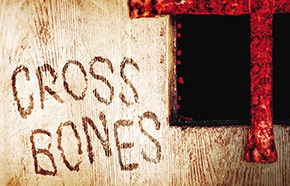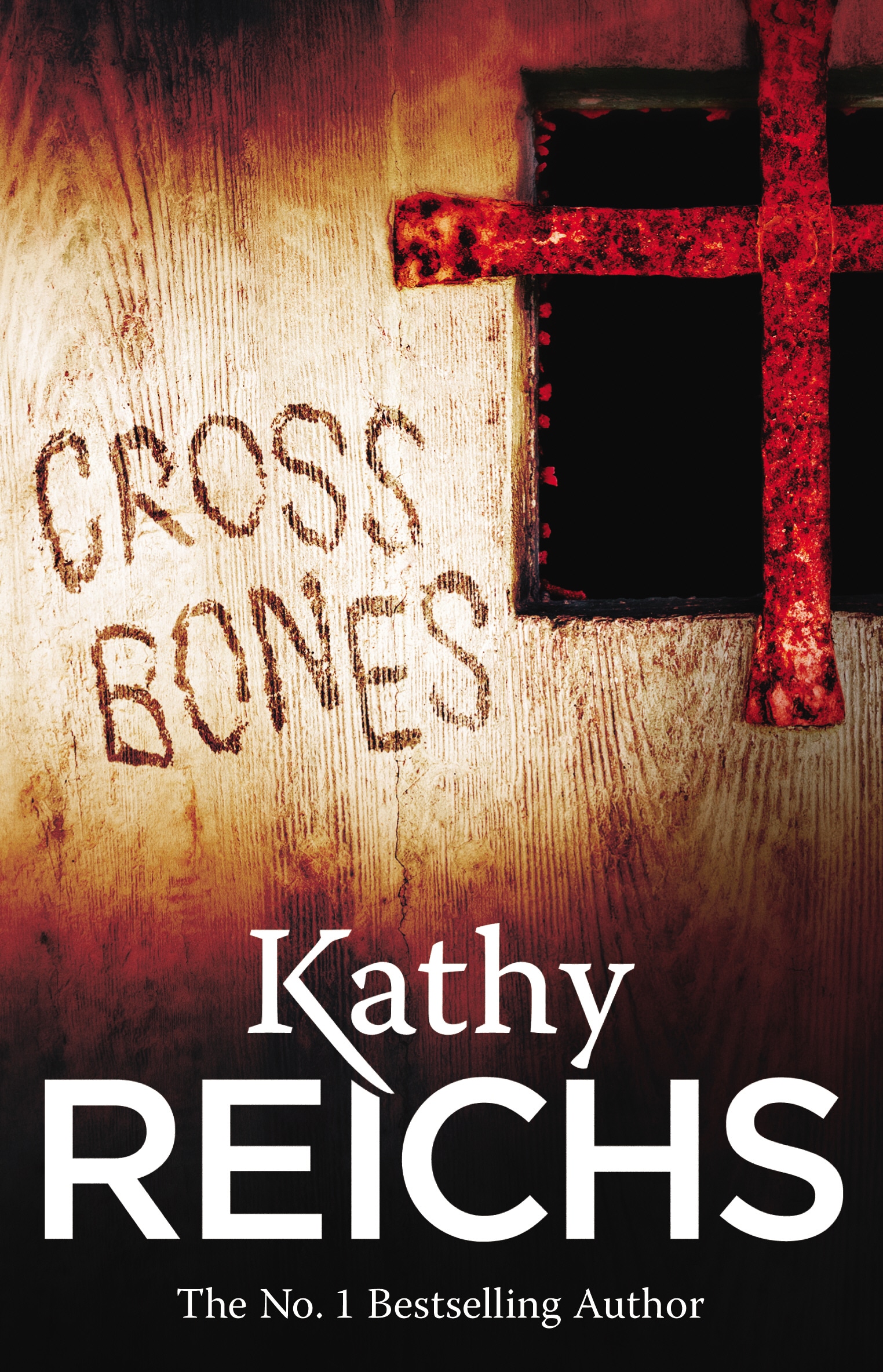Extracts
Extract: Cross Bones by Kathy Reichs
Kathy Reichs is vice president of the American Academy of Forensic Scientists, a member of the RCMP National Police Services Advisory Council, forensic anthropologist to the province of Quebec and a professor of forensic anthropology at the University of North Carolina at Charlotte. You don’t get more qualified than Reichs in the arena of forensic crime.
In Cross Bones, Dr Temperance Brennan investigates an apparent suicide from a gunshot wound but factors have led to the impossibility of determining the trajectory of the bullet.
Read an extract from Cross Bones by Kathy Reichs below.
Cross Bones
by
Kathy Reichs
1
Following an easter dinner of ham, peas, and creamed potatoes, Charles “Le Cowboy” Bellemare pinched a twenty from his sister, drove to a crack house in Verdun, and vanished.
That summer the crack house was sold upmarket. That winter the new homeowners grew frustrated with the draw in their fireplace. On Monday, February seventh, the man of the house opened the flue and thrust upward with a rake handle. A desiccated leg tumbled into the ash bed.
Papa called the cops. The cops called the fire department and the Bureau du coroner. The coroner called our forensics lab. Pelletier caught the case.
Pelletier and two morgue techs were standing on the lawn within an hour of the leg drop. To say the scene was confused would be like saying D-day was hectic. Outraged father. Hysterical mother. Overwrought kids. Mesmerized neighbors. Annoyed cops. Mystified firefighters.
Dr. Jean Pelletier is the most senior of the five pathologists at the Laboratoire de sciences judiciaires et de médecine légale, Quebec’s central crime and medico-legal lab. He’s got bad joints and bad dentures, and zero tolerance for anything or anyone that wastes his time. Pelletier took one look and ordered a wrecking ball.
The exterior wall of the chimney was pulverized. A well-smoked corpse was extracted, strapped to a gurney, and transported to our lab.
The next day Pelletier eyeballed the remains and said, “ossements.” Bones.
Enter I, Dr. Temperance Brennan, forensic anthropologist for North Carolina and Quebec. La Belle Province and Dixie? Long story, starting with a faculty swap between my home university, UNC Charlotte,
and McGill. When the exchange year ended, I headed south, but continued consulting for the lab in Montreal. A decade later, I’m still commuting, and lay claim to the mother lode of frequent flyer miles.
Pelletier’s demande d’expertise en anthropologie was on my desk when I arrived in Montreal for my February rotation.
It was now Wednesday, February 16, and the chimney bones formed a complete skeleton on my worktable. Though the victim hadn’t been a believer in regular checkups, eliminating dental records as an option, all skeletal indicators fit Bellemare. Age, sex, race, and height estimates, along with surgical pins in the right fibula and tibia, told me I was looking at the long-lost Cowboy.
Other than a hairline fracture of the cranial base, probably caused by the unplanned chimney dive, I’d found no evidence of trauma.
I was pondering how and why a man goes up on a roof and falls down the chimney, when the phone rang.
“It seems I need your assistance, Temperance.” Only Pierre LaManche called me by my full name, hitting hard on the last syllable, and rhyming it with “sconce” instead of “fence.” LaManche had assigned himself a cadaver that I suspected might present decomposition issues.
“Advanced putrefaction?”
“Oui.” My boss paused. “And other complicating factors.”
“Complicating factors?”
“Cats.”
Oh, boy.
“I’ll be right down.”
After saving the Bellemare report on disk, I left my lab, passed through the glass doors separating the medico-legal section from the rest of the floor, turned into a side corridor, and pushed a button beside a solitary elevator. Accessible only through the two secure levels comprising the LSJML, and through the coroner’s office below on eleven, this lift had a single destination: the morgue.
Descending to the basement, I reviewed what I’d learned at that morning’s staff meeting.
Avram Ferris, a fifty-six-year-old Orthodox Jew, had gone missing a week earlier. Ferris’s body had been discovered late yesterday in a storage closet on the upper floor of his place of business. No signs of a break-in. No signs of a struggle. Employee said he’d been acting odd. Death by self-inflicted gunshot wound was the on-scene assessment. The man’s family was adamant in its rejection of suicide as an explanation.
The coroner had ordered an autopsy. Ferris’s relatives and rabbi had objected. Negotiations had been heated.
I was about to see the compromise that had been reached.
And the handiwork of the cats.
From the elevator, I turned left, then right toward the morgue. Nearing the outer door to the autopsy wing, I heard sounds drifting from the family room, a forlorn little chamber reserved for those called upon to identify the dead.
Soft sobbing. A female voice.
I pictured the bleak little space with its plastic plants and plastic chairs and discreetly curtained window, and felt the usual ache. We did no hospital autopsies at the LSJML. No end-stage liver disease. No pancreatic cancer. We were scripted for murder, suicide, accidental and sudden and unexpected death. The family room held those just ambushed by the unthinkable and unforeseen. Their grief never failed to touch me.
Pulling open a bright blue door, I proceeded down a narrow corridor, passing computer stations, drying racks, and stainless steel carts on my right, more blue doors on my left, each labeled SALLE D’AUTOPSIE. At the fourth door, I took a deep breath and entered.
Along with the skeletal, I get the burned, the mummified, the mutilated, and the decomposed. My job is to restore the identity death has erased. I frequently use room four since it is outfitted with special ventilation. This morning the system was barely keeping up with the odor of decay.
Some autopsies play to an empty house. Some pack them in. Despite the stench, Avram Ferris’s postmortem was standing room only.
LaManche. His autopsy tech, Lisa. A police photographer. Two uniforms. A Sûrété du Québec detective I didn’t know. Tall guy, freckled, and paler than tofu.
An SQ detective I did know. Well. Andrew Ryan. Six-two. Sandy hair. Viking blue eyes.
We nodded to each other. Ryan the cop. Tempe the anthropologist.
If the official players weren’t crowd enough, four outsiders formed a shoulder-to-shoulder wall of disapproval at the foot of the corpse.
I did a quick scan. All male. Two midfifties, two maybe closing out their sixties. Dark hair. Glasses. Beards. Black suits. Yarmulkes.
The wall regarded me with appraising eyes. Eight hands stayed clasped behind four rigid backs.
LaManche lowered his mask and introduced me to the quartet of observers.
“Given the condition of Mr. Ferris’s body, an anthropologist is needed.”
Four puzzled looks.
“Dr. Brennan’s expertise is skeletal anatomy.” LaManche spoke English. “She is fully aware of your special needs.”
Other than careful collection of all blood and tissue, I hadn’t a clue of their special needs.
“I’m very sorry for your loss,” I said, pressing my clipboard to my chest.
Four somber nods.
Their loss lay at center stage, plastic sheeting stretched between his body and the stainless steel. More sheeting had been spread on the floor below and around the table. Empty tubs, jars, and vials sat ready on a rolling cart.
The body had been stripped and washed, but no incision had been made. Two paper bags lay flattened on the counter. I assumed LaManche had completed his external exam, including tests for gun-powder and other trace evidence on Ferris’s hands.
Eight eyes tracked me as I crossed to the deceased. Observer number four reclasped his hands in front of his genitals.
Avram Ferris didn’t look like he’d died last week. He looked like he’d died during the Clinton years. His eyes were black, his tongue purple, his skin mottled olive and eggplant. His gut was distended, his scrotum ballooned to the size of beach balls.
I looked to Ryan for an explanation.
“Temperature in the closet was pushing ninetytwo,” he said.
“Why so hot?”
“We figure one of the cats brushed the thermostat,” Ryan said.
I did a quick calculation. Ninety-two Fahrenheit. About thirty-five Celsius. No wonder Ferris was setting a land record for decomposition.
But heat had been just one of this gentleman’s problems.
When hungry, the most docile among us grow cranky. When starved, we grow desperate. Id overrides ethics. We eat. We survive. That common instinct drives herd animals, predators, wagon trains, and soccer teams.
Even Fido and Fluffy go vulture.
Avram Ferris had made the mistake of punching out while trapped with two domestic shorthairs and a Siamese.
And a short supply of Friskies.
I moved around the table.
Ferris’s left temporal and parietal bones were oddly splayed. Though I couldn’t see the occipital, it was obvious the back of his head had taken a hit.
Pulling on gloves, I wedged two fingers under the skull and palpated. The bone yielded like sludge. Only scalp tissue was keeping the flip side together.
I eased the head down and examined the face.
It was difficult to imagine what Ferris had looked like in life. His left cheek was macerated. Tooth marks scored the underlying bone, and fragments glistened opalescent in the angry red stew.
Though swollen and marbled, Ferris’s face was largely intact on the right.
I straightened, considered the patterning of the mutilation. Despite the heat and the smell of putrefaction, the cats hadn’t ventured to the right of Ferris’s nose or south to the rest of the body.
I understood why LaManche needed me.



Please note: Moderation is enabled and may delay your comment being posted. There is no need to resubmit your comment. By posting a comment you are agreeing to the website Terms of Use.